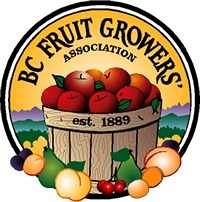Rust Mites and Pearleaf Blister Mite
General Description
Hosts
Apple is the only host for apple rust mite, pear for pear rust mite; pearleaf blister mite attacks pear and some varieties of apples (Newtown, Rome Beauty, sometimes McIntosh and Spartan) as well as several ornamental trees and shrubs.
Damage
Apple rust mite - Reddening of margins and upward cupping of leaves followed by bronzing or silvering with high populations.
Pear rust mite - Smooth russeting on leaves and fruit (Fig. 1).
.jpg) |
| Figure 1. Pears damaged by pear rust mite. (AA-FC) |
Pearleaf blister mite - Reddish russet spots on leaves (Fig. 2) and fruit and deformity of fruit (Fig. 3).
.jpg) |
.jpg) |
| Figure 2. Apple leaves damaged by pearleaf blister mite. (H. Philip) | Figure 3. Gala fruit damaged by pearleaf blister mite. (H. Philip) |
Identification
Eggs - Round and translucent.
Immature and adult - Tan, wedge-shaped, less than 0.2 mm long (Fig. 4).
.jpg) |
| Figure 4. Pear rust mites. (Photo credit: AA-FC) |
Life History
Rust mites overwinter at the base of buds, under bud scales and leaf scars, or in bark crevices on branches and twigs. When the buds open, mites move to the flower parts and leaves. At a base temperature of 6°C, 50% of pear rust mites will have emerged at 60 degree-days from January 1. Around petal-fall, pear rust mites and pearleaf blister mites move onto fruit. Rust mites produce several generations during the spring and summer. Apple rust mite populations usually decline in hot weather. Overwintering forms of pear rust mite appear in late July and move to overwintering sites on the tree.
Monitoring
There is no monitoring plan for pearleaf blister mite. For apple rust mite, follow the sampling plan described for summer monitoring of European red mite. For pear rust mite, begin examining the stem end of 20 fruit per block at calyx for mites. Continue monitoring until mid-August.
Management
Biological Control
Conservation of moderate numbers of apple rust mite is important. This mite serves as a valuable food source for predatory mites, allowing their survival early in the season so that they are available when needed to control European red mite. Consider a spray only when apple rust mites reach an average of 300-600 per leaf. 600 mites per leaf may cause little damage. Based on field observations, use the action threshold of 200 rust mites per leaf for Jonagold and Braeburn and in some cases Fuji and Gala. Base the final decision to spray on visible leaf damage. Unnecessary sprays can destroy rust mites resulting in the disappearance of predatory mites and a buildup of spider mites (two spotted, McDaniel spider mites or European red mites). Predatory mites are usually not numerous enough in pear trees to keep pear rust mites below damaging levels.
Cultural Control
Healthy, well-maintained trees will tolerate higher mite populations than weak or stressed trees. Winter pruning will remove many overwintering rust mites.
Chemical Control
Refer to the table Relative Toxicity of Insecticides/Miticides to Common Beneficial Mites and Insects as an aid to selecting least disruptive control products.
Apple rust mite - Apply Envidor or Pyramite, Acramite, Agri-Mek or wettable sulphur products (see pear rust mite below) to control economic populations.
Pear rust mite - Apply a miticide if an average of one rust mite per fruit is found. Dormant and pink sprays applied for pear psylla control will suppress pear rust mite. Apply Envidor (maximum once per season), a wettable sulphur product (Cosavet DF Edge, Kumulus, or Microthiol Disperss). Nexter or Agri-Mek with oil (see discussion of Agri-Mek under European red mite). Do not apply sulphur products to Anjou pear.
Pearleaf blister mite - If damage was evident on fruit last year, apply a dormant spray of lime-sulphur or a wettable sulphur (see pear rust mite above)
Pesticide resistance management - It is important to alternate products from different chemical classes or with different modes of action to avoid the development of resistance. Consult the Spray Schedules which list Group Numbers in order to select miticides with different chemical class group numbers to rotate as part of a resistance management program.
